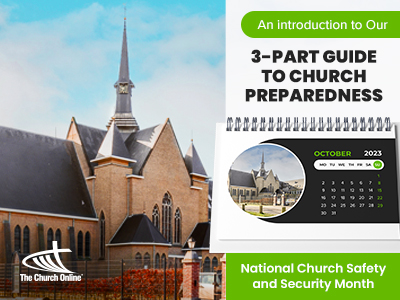 In contemporary context, where unexpected events can turn our lives upside down in the blink of an eye, one place that should always provide solace and security is our place of worship – our church. Churches are not just buildings; they are sanctuaries of faith, hope, and community. Yet, they are not immune to the unpredictable challenges life may throw our way.
In contemporary context, where unexpected events can turn our lives upside down in the blink of an eye, one place that should always provide solace and security is our place of worship – our church. Churches are not just buildings; they are sanctuaries of faith, hope, and community. Yet, they are not immune to the unpredictable challenges life may throw our way.
During the month of October, TCO Talks will explore the vital topic of safety preparedness for churches. While we gather under the roof of our sacred spaces to find spiritual guidance and support, it is equally essential to ensure that these places are safe and secure for all who enter. We will look at various aspects of safety preparedness, from the physical security of the church building to emergency response plans that can save lives.
Why Safety Preparedness Matters
Let’s explore how to strike the right balance between maintaining an open and welcoming atmosphere and ensuring the safety of everyone who walks through your church doors.
What to Expect
In the upcoming posts, we’ll look at a wide range of topics related to church safety preparedness and provide some suggestions for measurable action and professional resources. These include:
- Risk Assessment:The potential risks and vulnerabilities specific to your church community and how to craft an effective safety plan.
- Security Measures:Physical security measures such as access control, surveillance, and emergency lighting to fortify your church against potential threats.
- Emergency Response Plans: Creating a well-thought-out emergency response plan that includes protocols for fires, medical emergencies, and other crisis situations.
- Community Engagement:Building a sense of community within your church, where everyone knows each other and is invested in each other’s well-being, so that safety becomes a collective effort.
- Communication:Effective communication strategies for keeping your congregation informed and connected.
Education and Training: The importance of training for church staff and volunteers, ensuring they know how to respond effectively during emergencies.
Click Here to read Part 1 of our 3-part series dedicated to church safety and security.

